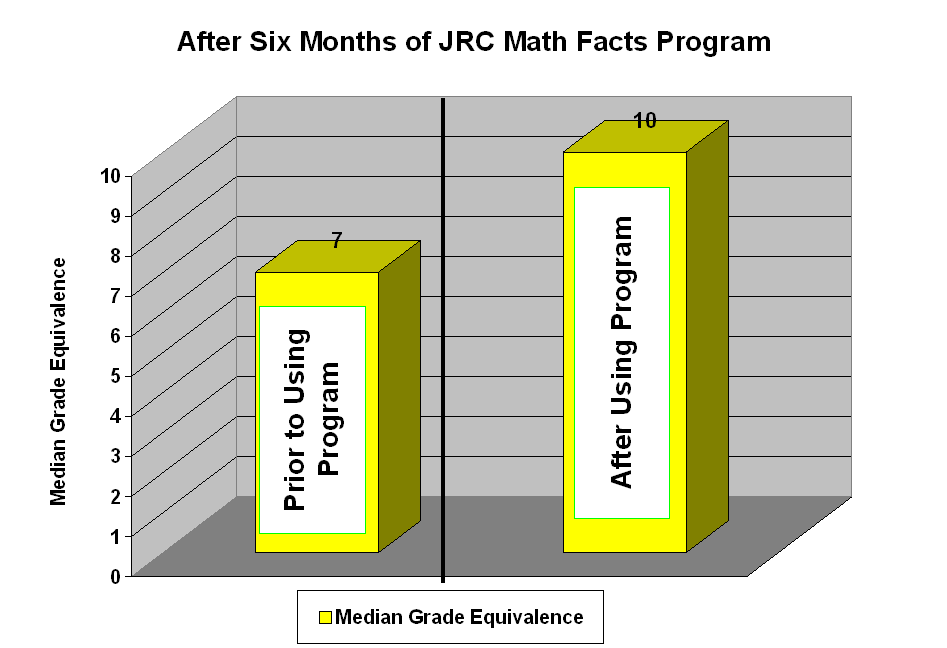
|
Use of Skin-Shock at the Judge Rotenberg Educational Center (JRC) |
Does Learning to Answer Basic Math Facts Through the See/Type Channel Generalize to the See/Write Channel?
Michelle Harrington, Edward Langford, Matthew L. Israel and Erin Holland
Judge Rotenberg Educational Center
The Judge Rotenberg Educational Center (www.judgerc.org) operates day and residential programs for children and adults with behavior problems, including conduct disorders, emotional problems, brain injury or psychosis, autism, and developmental disabilities. The fundamental approach taken at JRC is the use of behavioral psychology and its various technological applications, including behavioral education, programmed instruction, precision teaching, behavior modification, behavior therapy, behavioral counseling, self-management of behavior, and chart-sharing.
JRC employs the tenets of Precision Teaching, (Potts, Eshleman & Cooper, 1993) which include fluency and “overlearning” (Binder, 1987). An important aspect of Precision Teaching is the automaticity that results. This study reports the effects of Precision Teaching in learning basic math facts. Participants in this study used a computer program to learn basic math facts at a rate of 60 problems per minute. The generalization of the learning from computer program to pencil and paper is discussed.
Method
Participants and Setting
Participants were chosen based on the amount of time that they worked on JRC's Math Facts program. The minimum criteria were for individuals to work on the program for at least ten consecutive minutes, three times a week over a minimum of 6 months.
There were 33 participants in total, 16 males and 17 females. The median age was 17.1 years, with a range from 14.7 years to 21.7 years. Participants’ Full Scale IQ scores ranged from 50 to 110, with a median Full Scale IQ score of 78. Diagnoses for participants included learning disorders, mood disorder, pervasive development disorder, and mental retardation. All participants lived in JRC group homes and attended school at JRC's main school building.
Measures and Instruction
All participants were given the Math Fluency portion of the Woodcock Johnson III Achievement test as a pre-test for this study This test is a three-minute pencil and paper test in which students solve basic addition, subtraction, multiplication and division problems utilizing the See/Write learning channel. A post-test of the same Math Fluency problems from the Woodcock Johnson III was administered after the subjects worked on the program for approximately seven months.
JRC's Math Facts computer program breaks down basic math facts into many different curriculum units. It utilizes the See/Type learning channel. Students are presented with problems on their computer screen and have to type in the correct answer. The participant must master a unit at a pre-determined rate before moving on to the next unit. Participants in this study were required to work on addition, subtraction, multiplication and division problems found in Lessons 1 through 19 of the program. After they reached a certain rate in these basic operations, participants were required to work on 19 units of combined operations lessons, forcing them to pay close attention to the operation signs required for each problem; also employing a leap-up in the curriculum (Lindsley 1990).
Each participant was able to configure the program in a manner that was the most beneficial to them. They could earn a variety of rewards, from food to points that could be exchanged for other rewards.
Results
When the participants were pre-tested, they had a median grade equivalence of 7.0. They were able to solve approximately 84 to 92 problems out of 160 correctly. This resulted in an age-equivalence of 12.5 to 13.4 which fell below the participants’ actual ages. After seven months of working on the program, participants had a median grade-equivalence of 10.0. This is an age-equivalence of 15.6 to 15.8, which is closer to the participants’ actual age equivalence. In the post-test, participants were able to solve approximately 107 to 108 problems correctly. This is a median grade level improvement of 2.5 grade levels.
Discussion
The current data suggests there is generalization from the See/Type learning channel to the See/Write learning channel. The grade level improvements are substantial for the amount of time in which they took place. Through the use of Precision Teaching, and programmed rewards, the participants were able to make significant progress towards age appropriate academic performance.
References
Binder, C. V., (1987). Fluency-building. Precision Teaching and Management Systems, Inc.
Lindsley, O. R. (1990). Precision Teaching: By Teachers for Children. Teaching Exceptional Children, Spring. 10-15.
Potts, L., Eshleman, J. W., & Cooper, J. O., (1993). Ogden R. Lindsley and the historical development of Precision Teaching, The Behavior Analyst, 16, 177-189.
